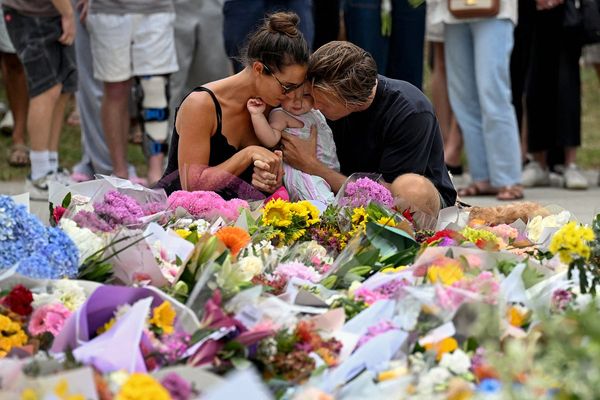It is curtains down on the six-month-long daily performances by professional Yakshagana troupes in Karnataka. The artistes are now geared up for another innings, that is the monsoon or off-season presentations, which usually start in June.
The ‘melas’ — as they are called in Kannada — are the performing troupes of Yakshagana theatre, which present daily shows from December to May touring different places in the coastal districts (Dakshina Kannada, Udupi and Uttara Kannada) and Malnad region (Shivamogga and Chikkamagaluru districts) of Karnataka and Kasaragod district of Kerala.
The melas perform in the open air, erecting a stage or sometimes pitching a tent in spacious grounds or vacant plots. The shows are sponsored either by individuals in the form of a ‘harake’ (an offering made to the God for fulfilling a certain wish) or by a group of art lovers or organisations. All performing troupes are attached to a temple and are either named after the temple or the main deity.
A majority of the troupes wind up their performances on the Tulu ‘Pattanaje Day’ (called Hattanavadi in Kannada which usually falls on May 25), which signifies the end of the festival season in the region. Following this, people concentrate on farming activities as the monsoon begins.
What is a mela
A ‘mela’ is a team comprising artistes and their helpers, electricians and those who manage the sound system. The number of people in each Yakshagana troupe varies from a minimum of 20 persons to a maximum of 35. Each troupe presents anywhere between 180 to 200 shows a season. Once the tour starts, the performers will have to stick to the troupe they are attached to till the end of the season. Once the season ends, the artistes have the choice to switch over to any troupe of their choice, before starting the next season’s tour.
Yakshagana performances in the traditional region are popularly called as “aata” (play) in Kannada. The region has upwards of 40 ‘melas’ which packed up the 2022-23 touring season on May 31. While a majority of the troupes ended their performances on May 25, the Amrutheswari Mela of Kota in Udupi district was the last to perform on May 31.
Second innings
However, the beginning of rains is no longer the end of Yakshagana performances. Earlier, the lack of auditoria and halls posed a hindrance to Yakshagana performances during the monsoon. With an abundance of venues opening up for hosting the shows, particularly over the last decade, Yakshagana theatre is active throughout the year, including during the monsoons, though performances are not held on a daily basis with an exception of Mandarthi in Udupi district.
Shruthakeerthi Raj, a PhD holder in Botanical Science, who moonlights as a Yakshagana artiste with the century-old Kateel Durgaparameshwari Prasadita Dashavatara Yakshagana Mandali (popularly called Kateel Mela) told The Hindu, “Yakshagana is a vibrant theatre form which is now active throughout the year not only in Karnataka but in some other parts of India and abroad too.” Mr. Raj, works as a visiting faculty, teaching Botany in private colleges and tutorials during daytime.
No more restrictions
The organisers pick up the most popular artistes from different troupes for these performances during the rainy season, usually held on Saturdays, Sundays or other holidays. The artistes are free from troupe restrictions to participate in the monsoon shows.
For example, a Yakshagana performance “Sampoorna Sri Devi Mahatme” is scheduled at Rajangana in the premises of the Udupi Sri Krishna Mutt/Temple on June 17, in which artistes drawn from various ‘melas’ will participate. Similarly, another show titled ‘Mahakali Maghadendra – Srinivasa Kalyana’ is scheduled at Katukukke in Kasaragod district of Kerala on June 24.
Breaking all-night tradition
Meanwhile, unable to meet the demand for ‘harake’ shows before the onset of monsoon, Mandarthi Sri Durgaparameshwari Dashavatara Yakshagana Mela, another Yakshagana troupe with a legacy of over a century, has been performing Yakshagana every day on the premises of the Mandarthi Durgaparameshwari temple since the past six years. The ‘mela’ broke the tradition of not performing in the monsoon in 2017 due to pressure from devotees, as otherwise they would have had to wait for many years to host the shows.
H. Dhananjaya Shetty, president of the managing committee of the Mandarthi Durgaprameshwari Temple, which manages the Mandarthi Mela, told The Hindu that the five troupes of the ‘mela’ ended their season’s performances on May 28, 2023. The monsoon shows of the mela, which will be performed only on the temple premises, would commence from June 17.
Due to advance booking, 19,000 ‘harake’ shows are waiting to be performed. It will take the troupe till the year 2044 to perform all of them. Similarly, the shows of Kateel Mela, which has six performing troupes, are also booked for more than a decade.
During the rainy season, some artistes also come together to form their own small troupes and present shows in different parts of the country as well as abroad, with Yakshagana lovers now spread across the globe. There are at least four such known troupes. They go to West Asian countries, Australia, the US, Germany and also Indian cities like Mumbai, Delhi, Hyderabad, Chennai and Baroda.
Short duration shows
The Kateel and Mandarthi melas have also switched over to short-duration formats from 2022-23 season. Though the managements of these melas attributed the decision to a government circular banning the use of loudspeakers in public places between 10 p.m. and 6 a.m., there was also a dearth of audience for all-night shows. The duration of the performance has now come down from eight hours (all night) to five-and-half hours.
Mr. Raj and Diwakar Karantha, manager of the 18-year-old Hanumagiri mela (erstwhile Ramachandrapura mela) said that the ‘kala miti’ (short duration) shows have helped retain, and even increase, the audience footfall, especially drawing children and youngsters to Yakshagana. All-night shows are traditionally performed from 9 p.m. to 5.30 a.m. The ‘kala miti’ shows are held from 6 p.m. to midnight.
Keeping pace with the changing times, Dharmasthala Manjunatheswara Krupaposhitha Yakshagana Mandali — another professional Yakshagana touring troupe which is well over 100 years old — had switched over to ‘kala miti’ shows much earlier, from 2015-16 onwards.
The short duration shows have resulted in some college students, teachers, advocates and people in other professions becoming Yakshagana artistes by night and performing with touring troupes. It has also helped the melas meet the shortage of artistes. If each of the 40 touring melas present a minimum of 180 shows daily, Yakshagana theatre records at least 7,200 performances in six months. The rainy season shows are an addition to this number.







